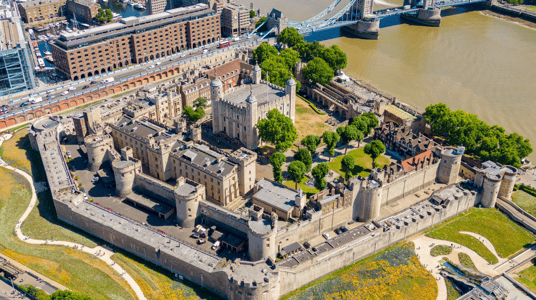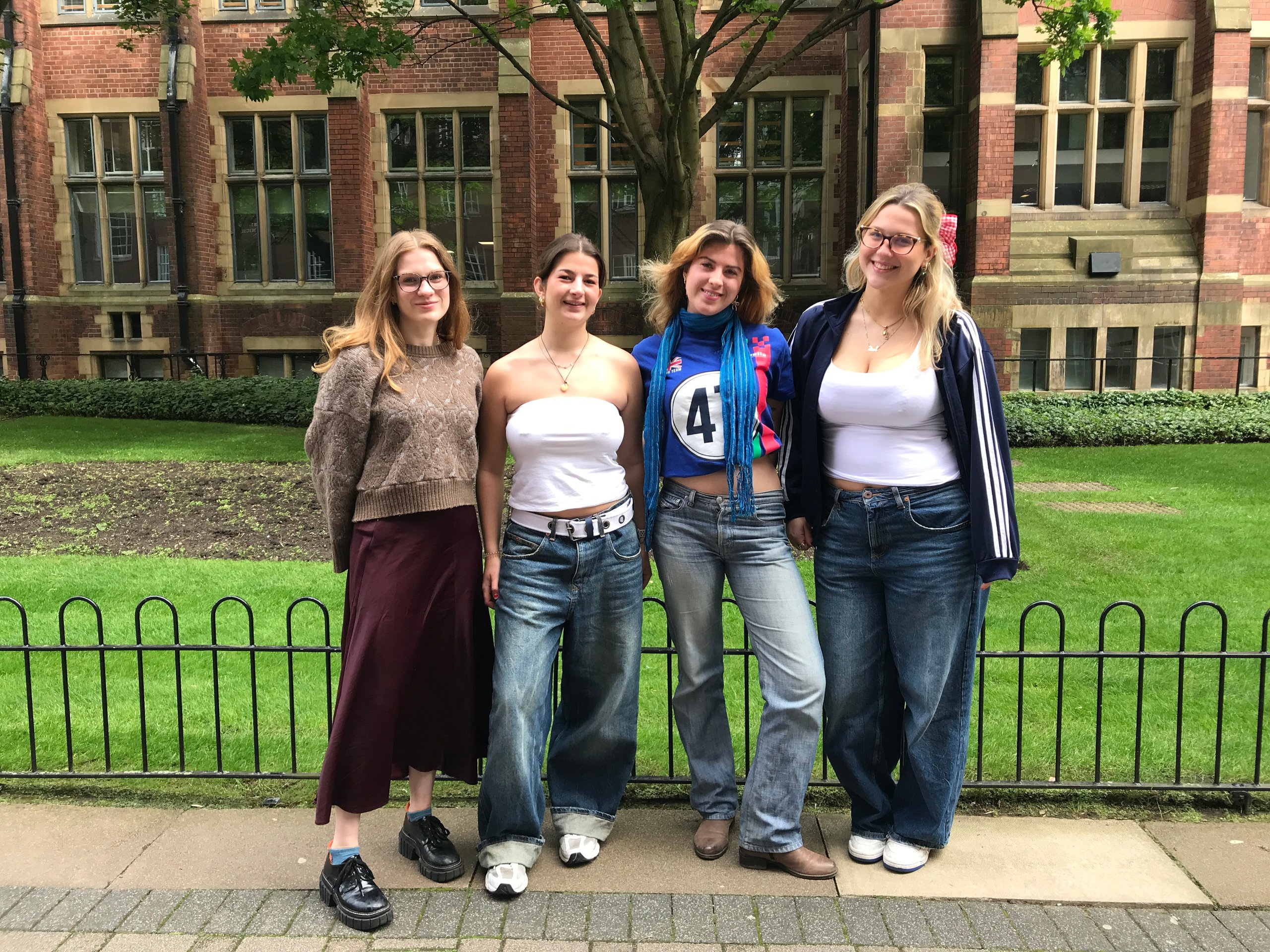Ciara Wallace – BA Liberal Arts, University of Leeds – May 2024

Opening points: culture, heritage, and education
As discussed in our previous blog, heritage and culture are overlooked in the Sustainable Development Goals (SDGs) with heritage being mentioned in one target (11.4).
Yet, as examined in the report Culture in the Localisation of the SDGs: an Analysis of Voluntary Local Reviews, states in SDG 4 (Quality Education) “culture is clearly an integral part of education policies, manifesting itself both as a competency that benefits from education”. Therefore, education can be utilised to enhance cultural identity, create inclusive cultural opportunities, and promote cultural diversity.
Heritage education are learning experiences which engage in a range of issues such as societal well-being and cultural heritage maintenance. As our world is constantly evolving, the definition of ‘quality education’ evolves, developing the need to ground education in respect for cultural diversity and human rights.
In light of this, “UNESCO strives to integrate culture in a wide range of education contexts and approaches to better equip learners of all ages with the knowledge, skills and attitudes to fulfil their potential, face future challenges, and forge more equitable and peaceful futures for all.” The increased relevance of cultural education globally is evident in the World Conference on Culture and Arts Education, in Abu Dhabi from the 13-15th February 2024 and brought together Culture and Education Ministers from around the world to adopt a UNESCO Framework for Culture and Arts Education.
Building on these conversations, in this blog I explore culture and heritage’s contribution to SDG 4, specifically SDG 4.5 (eliminate all discrimination in education). I will be exploring The Tower of London, centring on the World Heritage Site’s learning resources and their School’s Access Fund where they offer free school visits enabling enriching experiences. In this piece, I aim to explore how this experience impacts students from marginalised schools, and how their learning experiences promote cultural diversity.
Why culture and heritage education?
In exploring SDG 4.5, it is important to note this target aim – “eliminate gender disparities in education and ensure equal access to all levels of education and vocational training for the vulnerable, including persons with disabilities, indigenous peoples and children in vulnerable situations” by 2030.
There are many discussions on the connection between how art and culture investments in educational plans can prevent young, vulnerable people from a life of crime and imprisonment. In a debate at The British Parliament on the Cultural Education Plan Lord Bird exemplifies the importance, saying “if it was not for culture in my early years, I would not be here”. This was further demonstrated with Baroness Barran stating:
“Art and culture, as well as other extracurricular activities such as sport and other opportunities are critical for young people at risk of offending or in prison.”
Cultural education can be an essential part of child development, but especially for those in more vulnerable positions, in enabling opportunities for all learners. But is cultural education just learning in a classroom? No, it has to involve physically seeing culture on the ground – visiting museums, attending concerts, festivals, art galleries, theatre, heritage sites, etc. Learners need to interact with culture. Yet, these experiences come with a price, a price which, in the debate aforementioned, Lord Storey questions:
“Children and young people from poor families struggle to make that happen. How do we go about that?”
Though there is great acknowledgement for tackling discrimination in schools and disparities in equality, there isn’t a set plan in place to do so.
Where does heritage fit? The UK has rich history and, therefore, rich heritage. Heritage education enriches children’s understanding of the nation’s history; the UK is a beacon of multiculturalism, and this comes as a result of our heritage. Without heritage, there wouldn’t be diverse communities, and heritage education values children’s knowledge and appreciation for the diversity within the nation. Lord Mendoza offers that:
“Heritage education as part of cultural education has an enormous impact on young lives, particularly in building community and a sense of civic pride, providing an avenue for skills and jobs.”
The Tower of London, a UNESCO World Heritage Site
The Tower of London was built by William the Conqueror in 1066, is hailed by the UNESCO World Heritage Convention as the most complete 11th century fortress palace remaining in Europe, symbolising royalty. It facilitated the growth of several major State institutions in England, encompassing pivotal functions such as national defence, archival practices, and currency management; it has witnessed vital moments in British and European history.
The Historic Royal Palaces has gone to great measures to protect the Tower, including long-term conservation plans, cyclical maintenance, and prioritising funding by conservation needs. The Tower of London’s visitor experience stands to give everyone the opportunity to explore the palace’s history. These experiences are subject to thorough evaluation.
As previously mentioned, an integral part of cultural – and heritage – education is being able to experience it on the ground. The Tower of London offers learning experiences for Key Stage 1 through to A Level and offers special education needs and disability experiences. They keep inclusivity in mind, as well as ensuring there is a tailored experience for every level of year groups in the British education system. They hold a Sandford Award for Heritage Education, in which the framework to receive this accolade involves “achieving high quality, inclusive and accessible learning and promotes continuous provision”.
Heritage and culture learning experiences
The learning experiences offered consider key areas of the Tower’s history ranging from knights and castles; the Great Fire of London; Henry VIII’s Queens and their stories (HERstory, if you will); protest and rebellion; Elizabethan prisoners; religious prisoners; stories from the tower; Elizabeth I; the Normans; Wars of the Roses; Henry VIII and more. In their special education needs and disability experiences, they use interactive sessions to explore real stories which took place in the Tower. These sessions are delivered by a presenter trained in supporting students with special educational needs, they utilise multi-sensory props, and from this, they will, as per the learning objectives, “be empowered to use their senses to explore a new historic environment” and “develop social and emotional skills”.
Furthermore, the lessons are diverse in content. For example, in the Key Stage 2 learning session on the Queen’s Behind Henry VIII, they highlight the stories of women who have been written out of history, back into it, emphasising their value beyond their marital status. I think this is necessary to uncover the stories which have been lost, and in a place of such grave importance to the history and heritage of the UK. Similarly, in the Key Stage 3 learning session on Protest and Rebellion, the focus is on underrepresented narratives such as the Peasant’s Revolt, Edward Francis the runaway slave, and suffragette Leanora Cohen.
These lessons aligns with the National Curriculum emphasis on “understanding how people’s lives have shaped this nation and how Britain has influenced and been influenced by the wider world”. Underscoring the importance of cultural and heritage education in shaping modern life and how certain communities and cultures came to be in Britain.
Fostering more inclusive education through the School’s Access Fund
The School’s Access Fund has the paramount objective of facilitating free educational excursions for disadvantaged schools. As aforementioned, admission to such cultural institutions necessitates financial resources. Hence, the Access Fund “offers eligible schools the opportunity to have a high quality, immersive learning experience at the iconic sites”. The eligibility criteria for the fund states: “your school must be a state funded primary, secondary or special school”, state funded primary and secondary schools must have “30% or more students eligible for Pupil Premium” and “15% or more students with special educational needs”.
By providing students from marginalised schools the opportunity to partake in free educational excursions to a culturally significant site, they are granted access to learning experiences that may have otherwise been out of reach. Not only does the learning experiences involved enrich these students’ understanding of cultural and heritage education, but also exposes students to environments and historical contexts they may not have encountered otherwise. The nature of the learning experiences allows students to engage with the material more profoundly and memorably, fostering a deeper appreciation for cultural and heritage significance.
The School’s Access Fund has a profound impact on these students. The Fund addresses immediate needs and underscores the importance of equitable access to cultural and heritage education by prioritising free educational experiences for disadvantaged schools. The eligibility criteria, which targets schools with a significant proportion of students from disadvantaged backgrounds or with special educational needs, ensures that those who stand to benefit from such experiences are given priority.
The impact on these students ranges from increased access to cultural education to the cultivation of a sense of inclusion and belonging. By breaking down barriers, the fund empowers marginalised students to engage with their cultural heritage in meaningful and transformative ways.
The School’s Access Fund serves as a vital resource for informing future initiatives targeting accessibility to cultural and heritage education experiences. It extends beyond individual students and schools but fosters a deeper appreciation for cultural heritage. The targeted approach of eligibility criteria acknowledges the unique challenges faced by these students and seeks to address barriers to access, offering valuable insights into the challenges faced by marginalised communities. Therefore, it can inform policymakers, as well as educators, to recognise the importance of equitable access to cultural and heritage education.
The School’s Access Fund not only empowers marginalised students to reach their full potential but also cultivates a more inclusive society for future generations. Let us remain committed to the advocation for all students’ exploration, learning and growth through access to cultural and heritage education.
Acknowledgements
Many thanks to Dr Francesca Giliberto for supervising and supporting this research, and any thanks to my mum for instilling my passion for education.
Exploring Sustainable Development in UK UNESCO Designated Sites

This series of blogs, a continuation from the initial publication by the Horizons Institute at the University of Leeds, has been authored by four second-year BA Liberal Arts students as part of the project ‘Exploring Sustainable Development in UK UNESCO Designated Sites’, for the module ‘FOAH2001: Research Placement’ at the University of Leeds. The project was supervised by Dr Francesca Giliberto, a research fellow specialising in management, cultural heritage, and sustainable (urban) development at the Leeds University Business School, and is developed in partnership with the UK National Commission (UKNC) for UNESCO.
Over the past eight months, these students have explored culturally based sustainable development frameworks within specific UNESCO designated sites across the UK. Their investigation has focused on understanding how these sites navigate interconnected challenges and function as a bridge for local-to-global initiatives. Throughout their research journey, the students have actively engaged with site managers, practitioners, project evaluators, the UKNC for UNESCO, and various stakeholders. Their aim has been to discern the intricate interplay between diverse sectors and objectives, with a particular focus on the practical localisation of the United Nations’ Sustainable Development Goals (SDGs) through the lens of cultural preservation and promotion.

